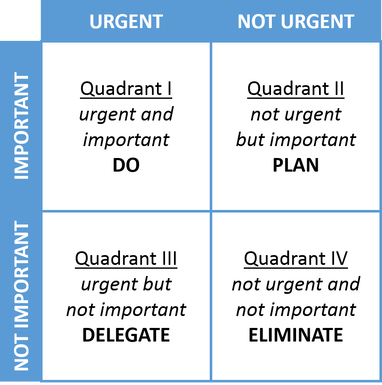A quick search will reveal countless versions, some designed with educators in mind. (You can even buy a planner set up to mimic the matrix!) The basics are a four-quadrant matrix with two axis, Important/Not Important, and Urgent/Not Urgent: In this matrix, the urgent and important (Quadrant I) must be addressed first, within a deadline that is likely to be externally imposed. These are items to resolve decisively and as swiftly as is feasible.
The second step is to understand that Quadrant III items, the urgent but not important, are still important to someone in the organization (or perhaps a regulatory entity) even if they are not important to the overall organization or to you. (If they aren’t important to anyone, they would be in Quadrant IV). Therefore, Academic Leaders should delegate Quadrant III items to the right person, with a timeline, direction, and agency. When these urgent matters are satisfactorily addressed or assigned, the academic leader can return to Quadrant II, which is the mission-driven academic program work essential to a strong and functioning school. The key to using the Eisenhower matrix effectively is never to lose sight of Quadrant II: Not Urgent But Important. If neglected too long, these items become a crisis or a quagmire, they can cause entire programs to fail. Commit to returning to this quadrant and ensure that colleagues are on the same page about what belongs here. Oh...and Quadrant IV? There’s a round basket for filing those right next to your desk. Image Source: https://commons.wikimedia.org/wiki/File:7_habits_decision-making_matrix.png
0 Comments
Leave a Reply. |
Don't miss our weekly blog posts by joining our newsletter mailing list below:AuthorsBrad Rathgeber (he/him/his) Archives
July 2024
Categories |



 RSS Feed
RSS Feed